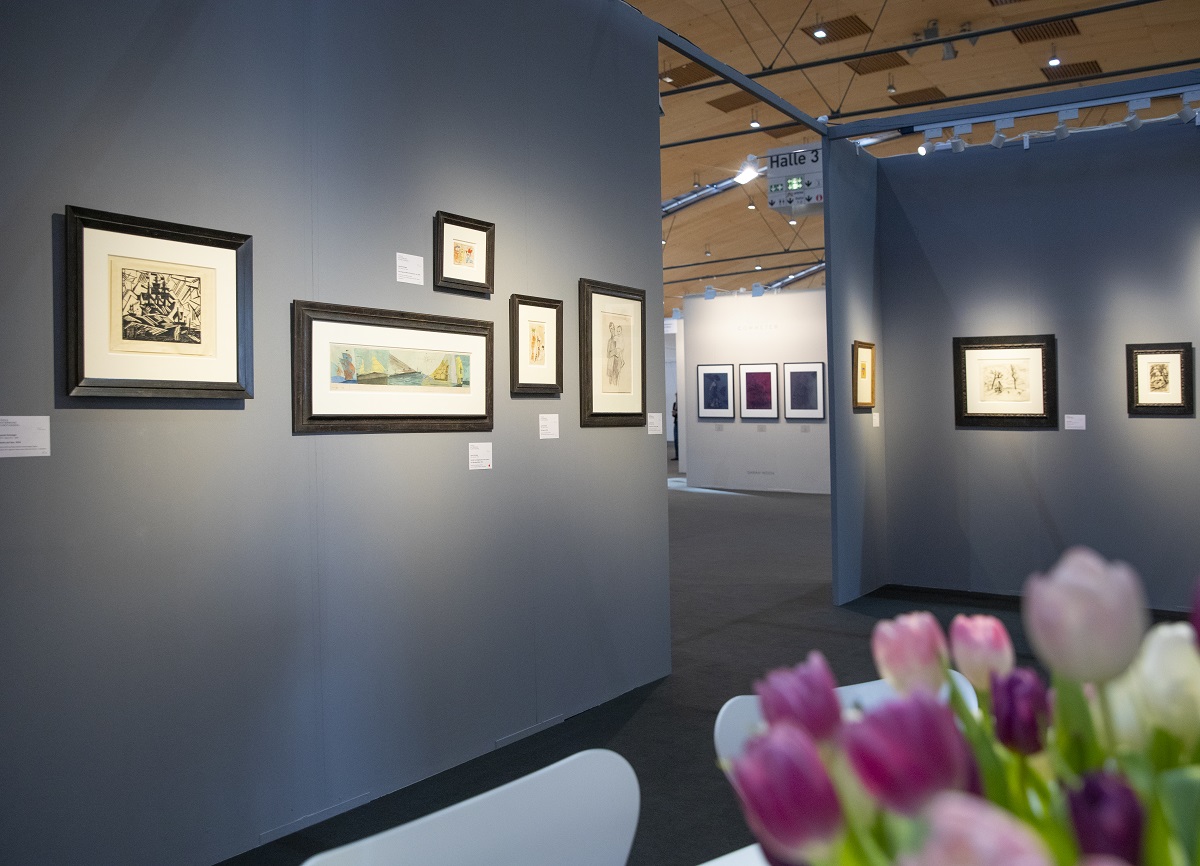Classic Modern – an important part of art kalrsruhe

A glance at the list of artists proves that art karlsruhe annually presents outstanding works of Classic Modern art. None of the big-name artists who inarguably wrote new chapters in art history during the previous century seem to be missing. Visitors looking for styles such as Expressionism, Cubism, Surrealism or Constructivism will find them in Hall 1 at the fair.
Diverse Styles United in Classic Modern Art

The new diversity of artistic styles that emerged in the 20th century revolutionized everything that had come before. It supplanted the stylistic pluralism of the 19th century, which had relied upon previous artistic currents, which it simultaneously revived: Cubism, for example, evolved in France; Constructivism and Suprematism developed in post-revolutionary Russia; and the Bauhaus was born in Germany.
The term “Classic Modern” subsumes trailblazing protagonists of 20th-century art, although these pioneers were surely not adherents of a single artistic style. Groundbreakers such as Hans Arp, Marcel Duchamp, Kazimir Malevich, Piet Mondrian, Barnett Newman, Jackson Pollock and Pablo Picasso are all exemplary of Classic Modern art.
Although these artists are frequently mentioned in the same breath, they are often connected by little more than their having lived in the same decades. They often debated with one another about their artistic opinions. Friendships shattered, new groups and new movements formed. Cubists (such as Juan Gris and Fernand Léger) and Futurists (like Giacomo Balla and Umberto Boccioni) influenced the art of the era. Dadaists (e.g. Francis Picabia and Kurt Schwitters) and Surrealists (such as Joan Miró and René Magritte) likewise left their traces and went on to influence several generations of subsequent artists. Likeminded artists and sculptors often formed temporary groupings in individual countries and cities, for example, the “Blauer Reiter” [“Blue Rider”] in Munich, the “Brücke” [“Bridge”] in Dresden, or Dada in Zürich. In Austria, in the surroundings of the Viennese Secession, an art emerged that was essentially dominated by painters such as Gustav Klimt and Egon Schiele. In Mexico, Frida Kahlo and above all Diego Rivera exerted a great influence on the development of the visual arts.
Last but not least, the often-cited Classic Modern also includes positions that make one’s own perception appear meaningful, e.g. German Expressionism (Kirchner, Nolde et al.) and American Abstract Expressionism (Willem de Kooning, Mark Rothko and others).

